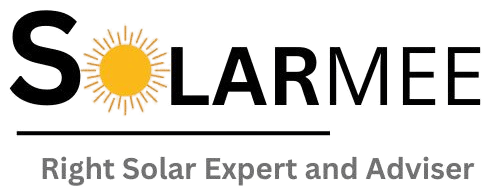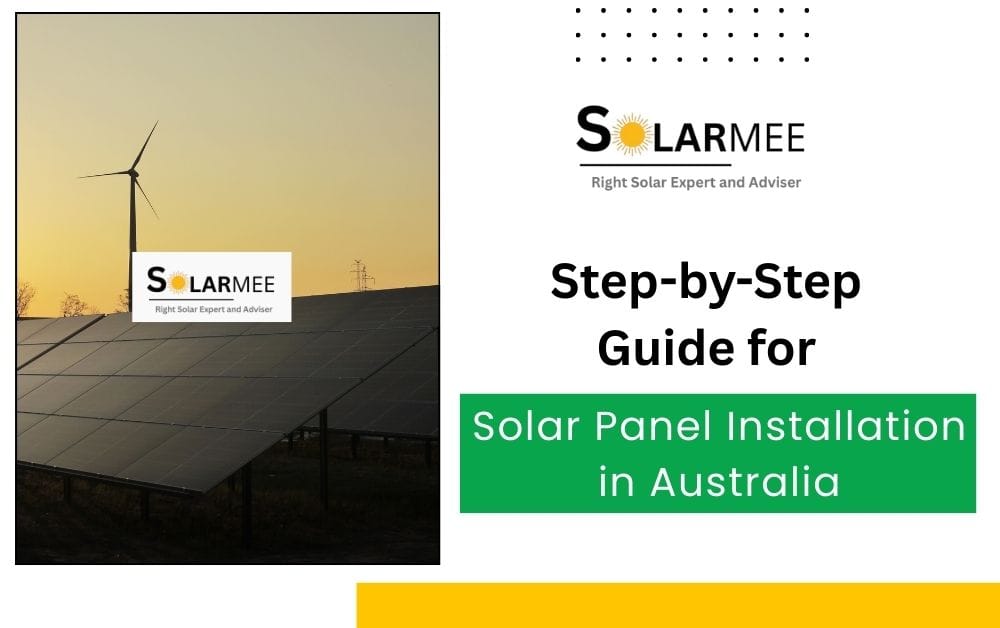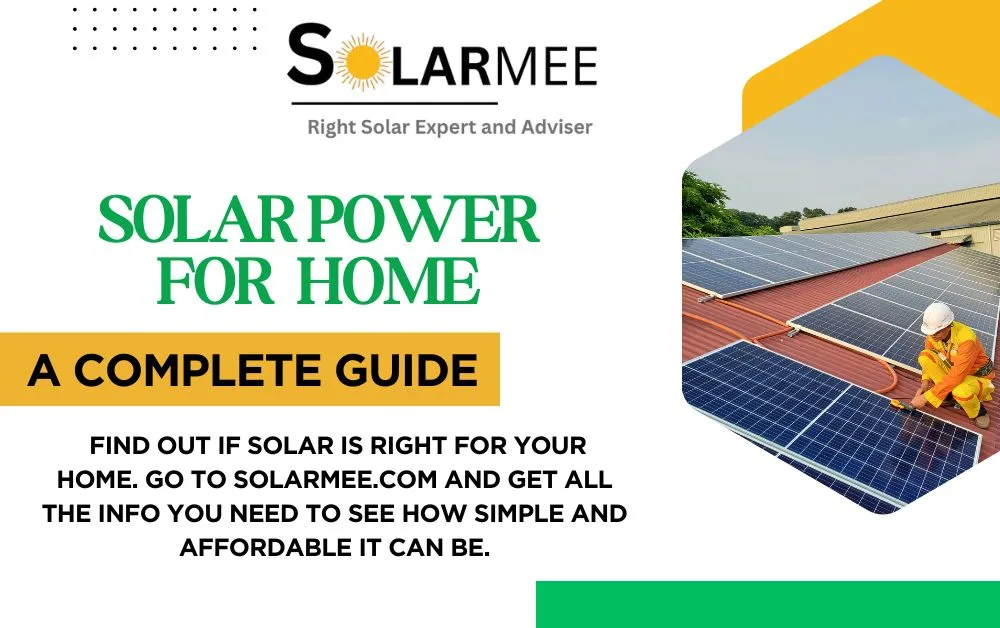Over the past few years, the adoption of solar power in homes has been on the increase in Australia. There is much sun, and the country is one of the best places in the world to harness solar energy. Solar panels are becoming popular among many families and businesses because they save them money on bills and also protect the environment. Due to this fact, the demand for solar panel installation is increasing year by year in Australia.
This blog is created as an easy-to-follow solar panel setup tutorial. It will guide you through the process of installing solar panels at home one step at a time. You will know how it will be, what to research before you begin, and some tips that could make the process easier. We’ll even share reviews and tips to make it easier for students and beginners to understand and study.
Why Solar Power is Booming in Australia
The interest in solar power in Australia is growing quickly because of government support and the advantages it brings to families and businesses. There are large rebates and discounts offered by the government, such as the Cheaper Home Batteries Program (30% off home batteries), Small-scale Technology Certificates (STCs), which have made solar panels a lot cheaper to install. Some states also provide additional assistance, such as interest-free loans and feed-in tariffs to offset the extra energy supplied to the power network. And the initial investment is considerably less.
Many Families are asking the question, Are solar panels worth it in Australia? Yes! Solar panels enable individuals to save so much money on electricity bills since they generate their own electricity using the sunlight. The savings are higher with an increase in energy prices. Solar energy is also highly environmentally friendly-it does not pollute the air and minimizes climate change. Solar panels can even be a value addition to the house when selling. Due to all these factors, solar panels are extremely popular and absolutely worth it in Australia.
Also Read: Top Solar Panel Manufacturer Companies in Australia
Understanding Solar Panel Installation Basics
Setting solar panels is rather simple; one only has to put the panels on the roof or in a sunny area where the panels can convert Wherever sunshine can reach them, convert it into electricity. Once the panels have been linked to an inverter, which transforms solar energy into electrical energy suitable for powering lights, fans, and other devices. This is the simplest concept of the working of solar panel installation.
It is either residential or commercial. Residential structures apply to homes, which are typically smaller in size and created to address household requirements. Business installations are bigger and are often installed in offices, school grounds, plants, or even in large open spaces. They generate increased power to address more demands.
It is a matter of solar panel installation, which is subject to a variety of factors. First, the condition of the roof is important as the panels are bulky and require solid support. In case the roof is not strong, it will require some repairs before installation. Shading is another factor. The panels will not be very effective with tall trees or surrounding buildings blocking too much sunlight. Finally, orientation matters. Panels usually face north in the southern half of Earth, and south in the northern half, though local shading may change that. The whole goal doesn’t seem to pick the best spot, tilt, and pattern, thus improving the performance system efficiency.

Step-by-Step Solar Panel Installation Guide
Step 1: Site Assessment & Energy Audit
The first step in roof and solar panel installation is determining whether your roof is sturdy enough to support panels or not. Installers consider the direction of the roof, its slope, and the presence of trees and buildings that bring shade. They also test the amount of sunlight on your roof on a day. A roof check is accompanied by an energy audit to understand the quantity of electricity consumed in the house. This assists in determining the appropriate size of the solar system.
Step 2: Choosing the Right Solar Panel
Then you select the panel type. Though more expensive, monocrystalline panels are the most effective and can function in Australia’s hot climate. Although a little less effective, polycrystalline panels are less expensive. Although they take up more room, the thin-film panels are light. When you are questioning which solar panel is good in Australia, it depends on how most people would use monocrystalline solar panels, since they can handle heat. This is the reason why most people think that they are one of the best solar panels in Australia.
Step 3: Designing the System & Getting Permits
The system is designed after the panels have been chosen. This includes selecting the appropriate inverter, determining whether or not to install a battery to store excess electricity, and sizing up your system. System to fit your house’s electricity requirements. It needs the local council and your energy provider’s approval before installation. These permits play a significant role in ensuring that nothing is unsafe or is not in accordance with the Australian rules.
Step 4: Installing Mounts & Panels
The actual installation of the roof and solar panel has now started. The panels are attached to strong mounting structures attached to the roof. These mounts should be sturdy and withstand the weather as they are exposed to wind and rain. The panels are then neatly mounted on the mounts. In Australia, panels tend to be north-facing as this provides the greatest amount of sunlight and is the most efficient all year round. Proper orientation will help save even more on electricity bills.
Step 5: Wiring & Inverter Connection
After the panels are installed, electrical wiring is done. This is what links the solar panels to the inverter, which is the device that transforms solar energy into available home electricity. Strict safety codes govern any wiring. Electricians also ensure cables are coated with covers and suitably joined to prevent danger.
Step 6: Grid Connection & Testing
Lastly, the system will be connected to either the main electricity grid or to a battery storage system. The installer then performs tests on the entire setup to ensure everything is in operation. A safety approval inspection is normally done. After this process is completed, your solar panels begin to generate clean energy for your house.
Costs of Solar Panel Installation in Australia
In Australia, the cost of solar panel installation varies with the size of the system and other elements, including brand, roof type, and the company setting it. Using the example of small systems, such as 3kW, which often cost 3 to 5 thousand dollars. Medium-sized systems like 5kW fall between 4,500-7,000, and large systems like 10kW could fall between 8,000-12,000. Such prices will cover the solar panels, inverter, and installation.
Many things affect the price. The panel brand will matter interfering famous brands can be more expensive but can have a longer lifetime. The roof type matters as well; when the roof is difficult to access or designed intricately, it may be more expensive. Furthermore, the company doing the installation can change the price based on expertise and the caliber of supplied services.
Therefore, when posing the issue of how expensive solar panel installation is, or how much solar power setup costs? Calculate $3,000, depending on the size and quality of your choice, to $12,000. Bear in mind that the price could be reduced with the help of government rebates.
Among other variables, the price varies by brand and roof kind; 3kW is the least expensive, 5kW is the average, and 10kW is the most expensive.
Maintenance, Insurance & Lifespan of Solar Panels
Solar panels in Australia usually last twenty‑five to thirty years:
They may lose half a percent to one percent of power each year, so after twenty‑five years, they still give about seventy‑five to eighty‑seven point five percent of the original output.
You should clean them every six to twelve months; a hose or a soft brush can clear bird droppings, dust, and other muck that blocks the sun.
Moreover, checks by a certified electrician, at least once every two years, are likely to spot any wiring trouble or damage.
Therefore, keeping them and inspecting them helps keep the system still useful. Rather than attempting to repair cracks or a severe energy decline on your own, contact a specialist.
Most home insurance policies in Australia may cover solar panels; however, it is wise to go through the specifics with your insurer regarding insurance. Though you should verify to be sure, some rules encompass damage from storms, fire, or theft. Typically, for ten to twenty-five years, warranties from solar panel manufacturers also shield your panels, typically covering issues including flaws or significant decreases in performance.
Clean your panels, check your system’s performance often, make sure your insurance and warranty are arranged, and get regular inspections. This will help your solar panels live long and save you money on electricity.

Choosing the Best Solar Panels & Installers in Australia
In Australia, LG, SunPower, Jinko, and Canadian Solar are some of the best solar panel brands. Though they can be expensive, LG is well-known for producing very high-quality panels that last a long time and run very effectively. Among the most efficient, SunPower panels transform more sunlight into electricity and offer a robust warranty of up to 40 years. Many people choose Jinko panels since they provide a fair compromise between price and performance. Canadian Solar is trustworthy and offers good value; not overly pricey and with respectable efficiency.
Customers say that these companies usually last well and perform consistently even on gloomy days. Because it means the panel can create more power from the same roof area, efficiency is crucial. Greater efficiency panels, such as SunPower and LG, are ideal when there is little to cover on the roof.
Choosing a CEC-accredited solar installer in Australia is crucial. This implies that they adhere to the standards for safety and are accredited by the Clean Energy Council. Furthermore, assisting you with warranties and government refunds, a certified installer might help. Before making a choice, always read reviews and inquire about experience.
Therefore, the best solar panels in Australia vary depending on roof space and budget. Though they cost more, LG and SunPower lead for quality and efficiency. Canadian Solar and Jinko offer great value. Always choose a CEC-accredited installer for a safe and easy setup.
This easy manual will support pupils in selecting the most suitable solar panels and installer in Australia.
Also Read: Solar Power Government Rebate in Australia
Conclusion
We examined the steps one at a time in this solar panel installation guide: checking your roof, selecting the appropriate system, obtaining permissions, laying out panels, wiring, and testing. Once installed, solar panels will help you reduce carbon emissions, cut down power bills, and provide clean electricity for many years. Simultaneously saving money and aiding the earth, they are a wise option. It is wise to consult a professional installer who can evaluate your house and requirements before you settle. You may get professional advice and more information or assistance by contacting solarmee.com.

“Hi, I’m Ishita ,a content writer who loves turning ideas into engaging stories. I specialize in writing blogs, articles, and website content that connects with readers. Over the past few years, I’ve worked with startups and companies to create clear, creative, and impactful content. When I’m not writing, you’ll usually find me reading or exploring new ideas for my research. This website is my space to share my work and connect with people who value quality writing.”




